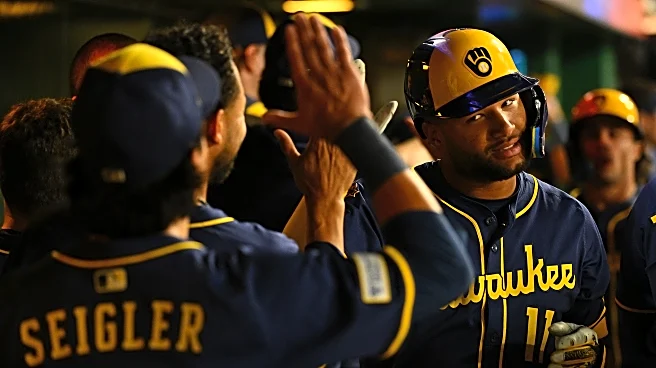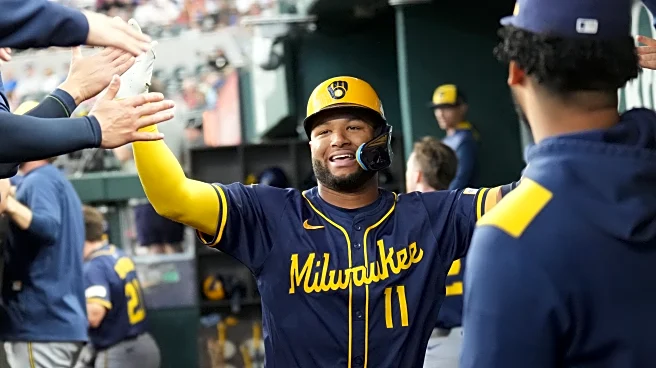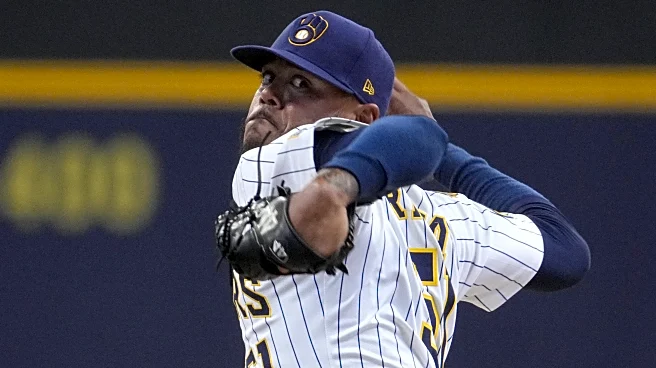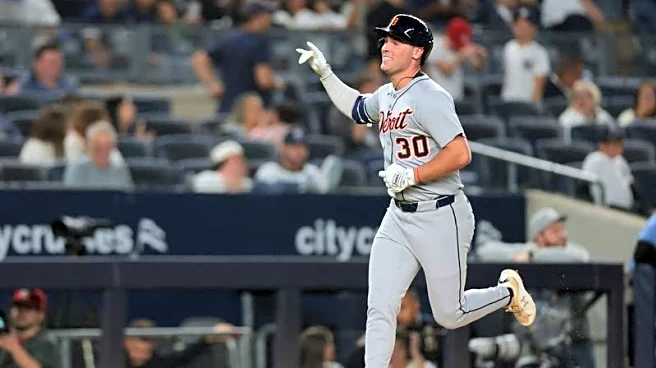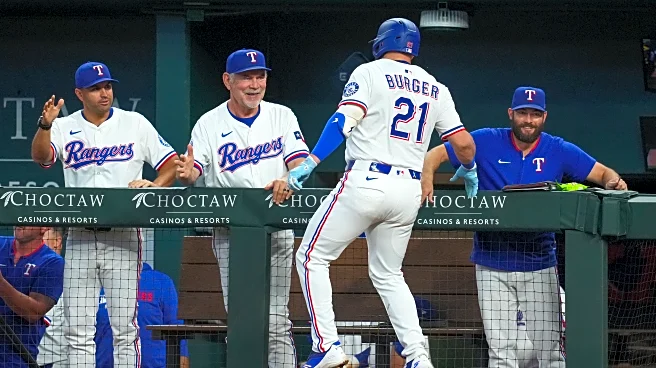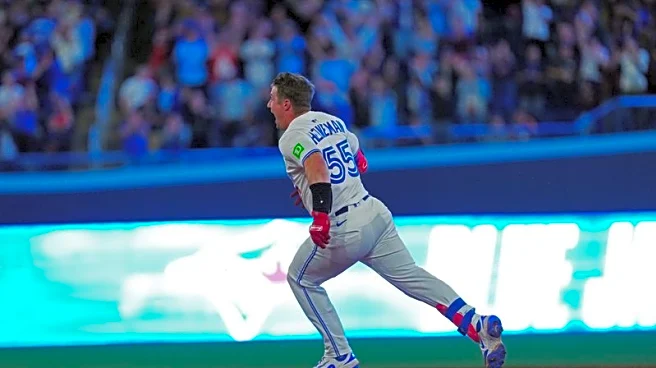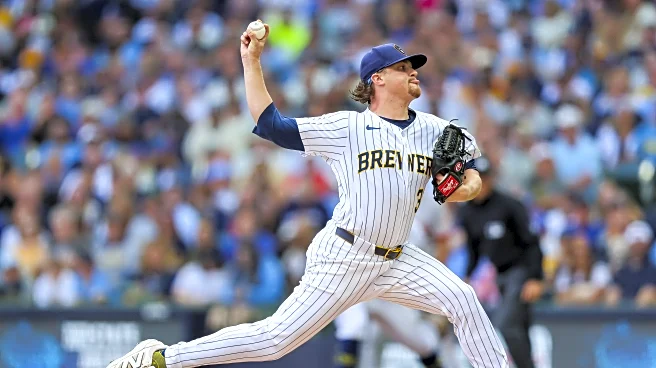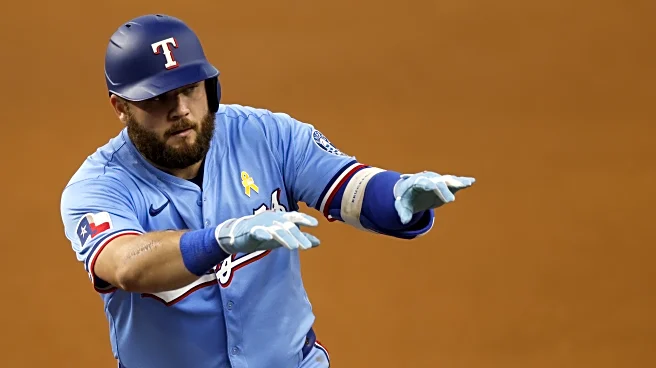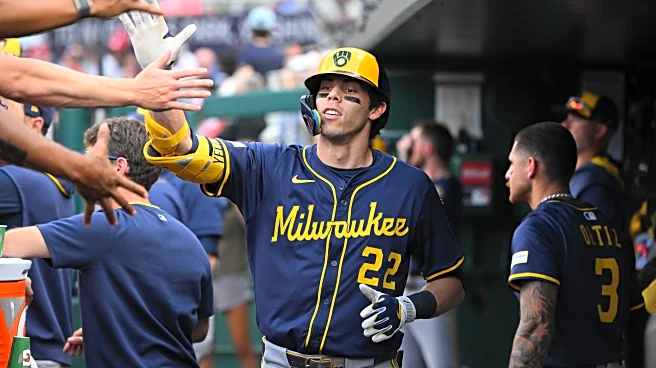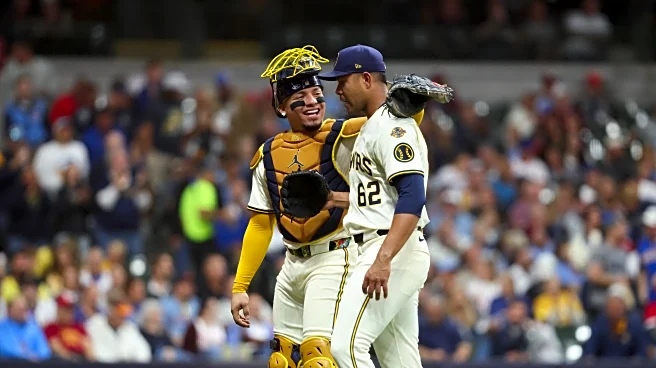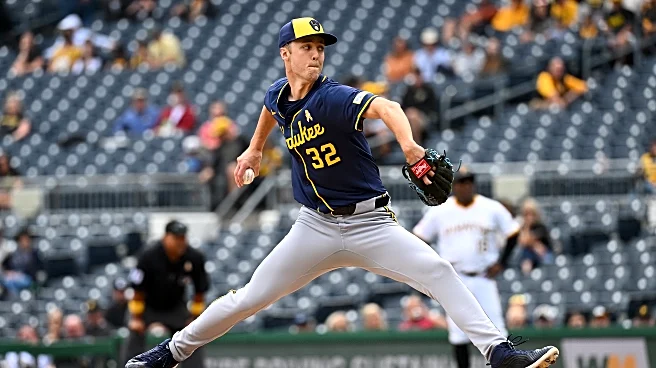Immediately after the Brewers were swept for the first time since March was, admittedly, not when I had envisioned penning this piece. C’est la vie.
Despite this week’s struggles in Arlington, the Brewers still need to go just 8-7 in their final 15 games in order to finish with the most wins in franchise history. Even after the sweep, with 15 games to go, Milwaukee’s .605 winning percentage is 12 points higher than the next highest in team history (the 2011 Brewers, who went 96-66).
Last year, Harrison
did a power ranking of the best teams in Brewer history, but his ranking included postseason success. Right now, I’m not there yet: I’m considering only the regular season, and I wanted to know: is this the best regular-season Brewers team of all time?
Remember: this is a list that does not consider postseason success, and I’m interested in a more “under the hood” understanding of “best,” so there’s even a team on here that missed the playoffs (back when only four teams made the postseason).
To make it a little bit suspenseful for you, dear reader, I’ll do a reverse countdown of the six teams I deemed worthy of this discussion. And here’s a quick rundown of the team stats used here:
- RD/G: Run differential per game
- OPS+: adjusted on-base plus slugging (each point above or below 100 is that percent better than average)
- OFF: FanGraphs’ Offensive Runs Above Average (includes baserunning)
- DEF: FanGraphs’ Defensive Runs Above Average
- ERA+: adjusted earned-run average (similar to OPS+)
- FIP-: adjusted fielding-independent pitching (similar to OPS/ERA+ except lower is better)
6. 2018: 96-67, 0.58 RD/G, 99 OPS+ (11th), 10th in OFF, 2nd in DEF, 9th in ERA+, 11th in FIP-
The 2018 Brewers didn’t have one of the best run differentials in team history, nor one of the best offenses in team history, nor one of the best pitching staffs in team history. They did have an outstanding defense, led by center fielder Lorenzo Cain. (A side note: doing this project made it obvious how deliberately the Brewers have valued defense this century. By FanGraphs’ team defensive metric, Milwaukee has not had a team rank lower than 13th since 2003, and 19 of the past 22 Brewer teams have ranked ninth or better.)
They had one outstanding offensive player—Christian Yelich won the MVP award, won a batting title, and led the NL in slugging, OPS, and OPS+—but the offense was, overall, about average, or even slightly below. Jesús Aguilar had a good season, Cain had the second-best offensive season of his career and found himself on the fringes of the MVP conversation, and Travis Shaw had a surprising 32-homer year. But shortstop was a black hole that would make Joey Ortiz blush; it was manned primarily by 23-year-old Orlando Arcia, who hit .236/.268/.307 in 119 games. The Brewers got significantly below-average contributions from catcher (Manny Piña) and second base (Jonathan Villar), too.
The starting pitching got by, led by the 30-year-old Jhoulys Chacín, who had a decent year but was hardly a true number one. This staff’s strength came from the bullpen, where the two-headed monster of Josh Hader (81.1 innings, 2.43 ERA, 15.8 strikeouts per nine) and Jeremy Jeffress (76.2 innings, 1.29 ERA) filled the high-leverage roles after Corey Knebel was unable to recreate the success of his 2017 season. Brandon Woodruff and Corbin Burnes were added to that bullpen in the second half and made major contributions once the team made the postseason.
There are other teams on this list that were incredible at one thing and not so good at another. This isn’t that team: yes, the defense was top notch, but this was a team that found success by being solid in every aspect of the game. And this team got hot at the right moment, and memorably chased down the Cubs for a game-163 division crown before making their deepest playoff run since 1982.
5. 2024: 93-69, 0.84 RD/G, 103 OPS+ (11th), 8th in OFF, 6th in DEF, 3rd in ERA+, 22nd in FIP-
Like the 2018 team, last year’s Brewers were pretty good at everything.
The team got by on its outstanding defense* (led by Platinum Glove winner Brice Turang, Gold Glover Sal Frelick, and Gold Glove finalist Blake Perkins), baserunning (they were second in the league in steals but stole bases at a better rate than any other team that ran nearly as often as they did), and solid contributions offensively from Willy Adames, William Contreras, second-half Jackson Chourio, and, when he was healthy, Yelich, who put up his best rate stats since his MVP peak of 2018-19.
*The Brewers’ defense in 2024 was so good that there was a massive discrepancy in the team’s ERA (3.65) and FIP (4.19). They ranked third in the league in ERA+ and 22nd in FIP-, the largest gap—either positively or negatively—in team history.
There was no real MVP candidate. The pitching staff was led by Freddy Peralta having a decent but sort of “meh” season, and the rest of it was the most random bunch of dudes. Here is a real list, which is the number two-through-eight players on the Brewers in innings pitched in 2024:
2. Colin Rea (167.2)
3. Tobias Myers (138)
4. Bryse Wilson (104.2)
5t. Aaron Civale (74)
5t. Joe Ross (74)
7. Hoby Milner (64.2)
8. Bryan Hudson (62.1)
Literally one of those players is still in the Brewers organization, and he spent most of the season in the minors. It’s been less than a year.
Yet this team, like so many underrated players from the history of baseball, succeeded with a wide variety of under appreciated skills and rode that balance to an easy division title and the fourth-best run differential per game in team history.
4. 1982: 95-67, 1.07 RD/G, 121 OPS+ (1st), 1st in OFF, 15th in DEF, 21st in ERA+, 21st in FIP-
The 1982 Brewers were an average-at-best defensive team. The pitching staff was, frankly, bad; the only starter with an ERA+ over 100 was Pete Vuckovich, who won a Cy Young Award despite just a 114 ERA+ (and a FIP that was nearly three quarters of a run higher than his ERA). Rollie Fingers had a good year, but not nearly at the level of his dominant, MVP-winning 1981 season.
But wow, that offense! These Brewers mashed their way to a division title and a massive positive run differential on the back of the best offense in franchise history. The 1982 team’s 121 OPS+ is the best in team history by five points, and was seven points better than the second-best team in the majors in 1982. Since 1900, only seven teams have had an OPS+ of at least 121 (not including the 60-game 2020 season). It was truly one of the great offensive teams of all time.
Robin Yount led the way with one of the greatest ever seasons by a shortstop, but five starters had an OPS+ of at least 112. Cecil Cooper had 38 doubles and 32 homers and finished second only to Yount in hits league-wide. Cooper, Ben Oglivie, and Gorman Thomas all hit at least 32 homers and Yount added 29 more. Paul Molitor stole 41 bases at an 82% clip. Behind Yount in MVP voting, Cooper was fifth, Thomas eighth, and Molitor 12th.
This is the team that most will default to when thinking of best teams, and that’s understandable; it is the most successful team in franchise history from a postseason standpoint and, aside from the 2025 team, it is the only team in Brewer history to outscore opponents by one run per game on average. But the offense masked some real flaws in other areas, which is why they’re only fourth on this list.
3. 1978: 93-69, 0.95 RD/G, 116 OPS+ (1st), 1st in OFF, 13th in DEF, 10th in ERA+, 12th in FIP-
The 1978 Brewers were a fascinating team. They had the league’s best offense by a mile; their 116 OPS+ was eight points better than the next team. They got a career season from Larry Hisle, who hit .290 with 34 homers. Five players had an OPS+ of at least 128 in over 400 plate appearances: Hisle (153), Thomas (142), Sixto Lezcano (135), Cooper (133), and Sal Bando (128, who also played good defense in the last great season of what could’ve been a Hall-of-Fame career).
At 0.95 runs per game, they have the third-best run differential in franchise history, just behind the 1982 team discussed above. The pitching and defense were solid, if not spectacular; the middle infield was ably manned by the young Yount and Molitor, who were—combined—about the age that Justin Verlander is now. On the mound, Mike Caldwell had one of the great outlier seasons of all time, and went 22-9 with a 2.36 ERA in almost 300 innings, earning a second-place Cy Young finish. Lary Sorensen, who won 18 games with a 3.21 ERA, was a capable sidekick.
Yet they went just 93-69 and finished third in the American League East, 6.5 games behind the Yankees and 5.5 behind the Red Sox.
The bullpen was a weakness. It was a different era, but no Brewer had more than nine saves, and they didn’t have a single reliever who threw 50 innings and had an ERA+ above 102. Beyond Caldwell and Sorensen, the starting rotation was sketchy at best. Cooper, Thomas, and Lezcano all missed at least 25 games.
They just couldn’t quite put it together in terms of actual results on the field, even though the underlying metrics signaled a team that should’ve challenged for the division. Another excellent season but second-place finish followed in 1979, but after a step back in 1980, the Brewers made the trade that ended this iteration of the Brewers when Lezcano and Sorensen were included in the swap that brought Fingers, Ted Simmons, and Pete Vuckovich to Milwaukee.
2. 2011: 96-66, 0.51 RD/G, 102 OPS+ (10th), 8th in OFF, 2nd in DEF, 5th in ERA+, 4th in FIP-
In 2008, the Brewers ended a 26-year playoff drought, but that team was dragged into the postseason, kicking and screaming, by CC Sabathia. They were probably a little ahead of schedule.
The 2011 team was right on time. Prince Fielder and Ryan Braun were both 27, and both at the height of their (possibly chemically enhanced, oh well) powers. Braun had one of the best offensive seasons in Brewers history, led the NL in OPS, stole 33 bases in 39 tries, and won the MVP. Fielder walked over 100 times, hit 36 doubles and 38 homers, and had the second-best season of his career by OPS+.
There were other offensive contributors. Rickie Weeks missed all of August with an ankle sprain but had, arguably, his best season on a game-to-game basis. Corey Hart hit 26 homers in 130 games and had a 133 OPS+. Nyjer Morgan, “Tony Plush,” had his finest season, and earned 3.0 WAR in just 119 games. The overall numbers sagged due to an utter lack of production from the left side of the infield—Yuniesky Betancourt and Casey McGehee combined for -0.8 WAR and, possibly to the team’s detriment, both played in over 150 games—but it was a good offensive group.
On the pitching side, a couple of aggressive moves helped. Zack Greinke’s tenure in Milwaukee was, on some level, disappointing, and in 2011 he had just a 3.83 ERA in 171.2 innings. But he was a victim of bad luck: his FIP was nearly a run better than his ERA, and he led the league in K/9. Even if the results weren’t where anyone hoped, Greinke was keeping Milwaukee in games. The Brewers also traded their former top prospect, Brett Lawrie, to Toronto for Shaun Marcum, who had a solid year before running out of gas down the stretch. Yovani Gallardo and Randy Wolf each started 33 games and threw more than 200 innings with ERA+ numbers of 112 and 107, respectively.
In the bullpen, John Axford had a dream season and set a franchise record for saves that still stands. Francisco Rodríguez was acquired at the trade deadline and became one of the league’s deadliest setup men. 41-year-old Takashi Saito only made 30 appearances, but had the last good year in what was an immensely under appreciated career.
This was just a good team at every level. They had some weaknesses but the strengths more than outweighed them, and they finished comfortably ahead of the second-place Cardinals in the division. Alas, those Cardinals would end the Brewers’ season in the NLCS, but the regular season was a rousing success.
1. 2025: 89-58, 1.14 RD/G, 107 OPS+ (8th), 5th in OFF, 6th in DEF, 4th in ERA+, 6th in FIP-
Yes, this is the best Brewer regular-season team of all time.
Like a few of the other teams cited here, the 2025 Brewers do everything well. But no team in Brewer history has done everything quite as well as this team does, and the weaknesses cited about the 2011 team don’t really exist here.
Via FanGraphs, this team is currently fifth in the league in offense, sixth in defense, and second in ERA-. They are number one in FanGraphs’ baserunning metric. Their FIP is not far off from their ERA, suggesting that it’s not just the defense that’s making the pitching succeed. The bullpen has been good. The starting rotation has been good.
Concerns about the offense’s power have been offset by the league’s sixth-best walk rate, fourth-best strikeout rate, and speed (which contributes to the league’s second-best batting average on balls in play). They’re second in baseball in hits and batting average. It is fair to question whether a lack of home run power will be a weakness in the postseason (they’re 20th in the league in homers), but Milwaukee has scored the second-most runs in the league. They’ve found alternative means of scoring, at least for now.
The Brewers aren’t going to have a real challenger for MVP unless Brice Turang’s current hot streak continues to the end of the season, and even then, disagreements over defensive metrics might keep him out of the top end of the discussion. Freddy Peralta has a chance at finishing second in Cy Young voting, but he has no chance at winning it. Trevor Megill and Abner Uribe have both been excellent, but neither will win the NL’s Reliever of the Year.
Even without the individual accolades, this team has—as of today—the best run differential and winning percentage in team history. The franchise has never had a team as good at every facet as this one is. Whether it leads to postseason success is a question for a different day, but I’m comfortable saying this is the best regular-season team they’ve ever had.
